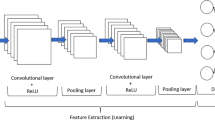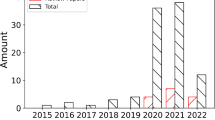Abstract
India is among the largest cultivators and consumers of wheat grains leading to apparent demand for identifying the quality and varietal distribution of wheat to fulfill the specific requirements of food industries. Moreover, with the variations in prices of distinct varieties in different parts of the country, it becomes a vital need for the customers as well as for the cultivators to identify and classify the grains based upon specific end products, demand, and prices of individual variety. The growth of Machine Learning and Computer Vision in agriculture, facilitate the development of such techniques that can successfully identify the classes based on visual features and representation. In this paper, a model has been developed from scratch for the classification of fifteen different varieties of wheat consists of 15000 images based on their visual traits using Convolutional Neural Network. The model has been produced under a different set of hyper-parameters tuned to develop the best model that can classify the varieties of wheat grains with high accuracy and minimum loss. The performance of the different models are compared in terms of classification accuracy and categorical cross-entropy loss. The model which is found best, successfully classifies the wheat varieties with 94.88% training accuracy and 97.53% test accuracy while on the other side reduces loss to 15% for training and 8% for the test set. Hence, the developed model can be deployed for the classification of different grain varieties, plant diseases, plant varieties, and several other fields under agriculture.















Similar content being viewed by others
References
Arel I, Rose DC, Karnowski TP, et al. (2010) Deep machine learning-a new frontier in artificial intelligence research. IEEE Comput Intell Mag 5 (4):13–18
Barbedo JGA (2018) Impact of dataset size and variety on the effectiveness of deep learning and transfer learning for plant disease classification. Comput Electron Agric 153:46–53
Bi L, Kim J, Kumar A, Fulham M, Feng D (2017) Stacked fully convolutional networks with multi-channel learning: application to medical image segmentation. Vis Comput 33(6-8):1061–1071
Brahimi M, Arsenovic M, Laraba S, Sladojevic S, Boukhalfa K, Moussaoui A (2018) Deep learning for plant diseases: detection and saliency map visualisation. In: Human and machine learning. Springer, pp 93–117
Cao Z, Mu S, Dong M (2019) Two-attribute e-commerce image classification based on a convolutional neural network. The Visual Computer, pp 1–16
Chen XW, Lin X (2014) Big data deep learning: challenges and perspectives. IEEE Access 2:514–525
Cheng S, Lai H, Wang L, Qin J (2019) A novel deep hashing method for fast image retrieval. Vis Comput 35(9):1255–1266
Fujita E, Kawasaki Y, Uga H, Kagiwada S, Iyatomi H (2016) Basic investigation on a robust and practical plant diagnostic system. In: 2016 15th IEEE international conference on machine learning and applications (ICMLA). IEEE, pp 989–992
Gao B, Pavel L (2017) On the properties of the softmax function with application in game theory and reinforcement learning. arXiv:170400805
Goodfellow I, Bengio Y, Courville A (2016) Deep learning. MIT Press
Güneş EO, Aygün S, Kırcı M, Kalateh A, Çakır Y (2014) Determination of the varieties and characteristics of wheat seeds grown in Turkey using image processing techniques. In: 2014 the third international conference on agro-geoinformatics. IEEE, pp 1–4
Ioffe S, Szegedy C (2015) Batch normalization: accelerating deep network training by reducing internal covariate shift. arXiv:150203167
Kaya Y, Kayci L (2014) Application of artificial neural network for automatic detection of butterfly species using color and texture features. Vis Comput 30(1):71–79
Kingma DP, Ba J (2014) Adam: a method for stochastic optimization. arXiv:14126980
Krizhevsky A, Sutskever I, Hinton GE (2012) Imagenet classification with deep convolutional neural networks. In: Advances in neural information processing systems, pp 1097–1105
Kuo TY, Chung CL, Chen SY, Lin HA, Kuo YF (2016) Identifying rice grains using image analysis and sparse-representation-based classification. Comput Electron Agric 127:716–725
Kurtulmuş F, Ünal H (2015) Discriminating rapeseed varieties using computer vision and machine learning. Expert Syst Appl 42(4):1880–1891
Larese MG, Namías R, Craviotto RM, Arango MR, Gallo C, Granitto PM (2014) Automatic classification of legumes using leaf vein image features. Pattern Recogn 47(1):158–168
LeCun Y, Bengio Y, Hinton G (2015) Deep learning. Nature 521(7553):436
LeCun YA, Bottou L, Orr GB, Müller KR (2012) Efficient backprop. In: Neural networks: tricks of the trade. Springer, pp 9–48
Liu X, Xu Q, Wang N (2019) A survey on deep neural network-based image captioning. Vis Comput 35(3):445–470
Mique EL Jr, Palaoag TD (2018) Rice pest and disease detection using convolutional neural network. In: Proceedings of the 2018 international conference on information science and system. ACM, pp 147–151
Otsu N (1979) A threshold selection method from gray-level histograms. IEEE Trans Syst Man Cybern Syst 9(1):62–66
Paoletti M, Haut J, Plaza J, Plaza A (2018) A new deep convolutional neural network for fast hyperspectral image classification. ISPRS J Photogramm Remote Sens 145:120–147
Patrício DI, Rieder R (2018) Computer vision and artificial intelligence in precision agriculture for grain crops: a systematic review. Comput Electron Agric 153:69–81
Pazoki A, Farokhi F, Pazoki Z, et al. (2014) Classification of rice grain varieties using two Artificial Neural Networks (MLP and Neuro-Fuzzy). J Anim Plant Sci 24(1):336–343
Petrellis N (2017) Mobile application for plant disease classification based on symptom signatures. In: Proceedings of the 21st pan-hellenic conference on informatics. ACM, p 1
Sabanci K, Kayabasi A, Toktas A (2017) Computer vision-based method for classification of wheat grains using artificial neural network. J Sci Food Agricul 97(8):2588–2593
Sabanci K, Toktas A, Kayabasi A (2017) Grain classifier with computer vision using adaptive neuro-fuzzy inference system. J Sci Food Agric 97 (12):3994–4000
Sharma S, Mehra R (2019) Effect of layer-wise fine-tuning in magnification-dependent classification of breast cancer histopathological image. The Visual Computer, pp 1–15
Sivakumar V, Anandalakshmi R, Warrier RR, Singh B, Tigabu M, Nagarajan B (2013) Discrimination of Acacia seeds at species and subspecies levels using an image analyzer. For Sci Pract 15(4):253–260
Uthayakumaran S, Batey I, Wrigley C (2005) Variety identification to suit the needs of industry. Cereals 2005
Wang J, Chen L, Zhang J, Yuan Y, Li M, Zeng W (2018) CNN transfer learning for automatic image-based classification of crop disease. In: Chinese conference on image and graphics technologies. Springer, pp 319–329
Wright J, Yang AY, Ganesh A, Sastry SS, Ma Y (2008) Robust face recognition via sparse representation. IEEE Trans Pattern Anal Mach Intell 31(2):210–227
Zapotoczny P (2014) Discrimination of wheat grain varieties using image analysis and multidimensional analysis texture of grain mass. Int J Food Prop 17 (1):139–151
Zareiforoush H, Minaei S, Alizadeh MR, Banakar A (2015) Potential applications of computer vision in quality inspection of rice: a review. Food Eng Rev 7(3):321–345
Author information
Authors and Affiliations
Corresponding author
Additional information
Publisher’s note
Springer Nature remains neutral with regard to jurisdictional claims in published maps and institutional affiliations.
Rights and permissions
About this article
Cite this article
Lingwal, S., Bhatia, K.K. & Tomer, M.S. Image-based wheat grain classification using convolutional neural network. Multimed Tools Appl 80, 35441–35465 (2021). https://doi.org/10.1007/s11042-020-10174-3
Received:
Revised:
Accepted:
Published:
Issue Date:
DOI: https://doi.org/10.1007/s11042-020-10174-3




